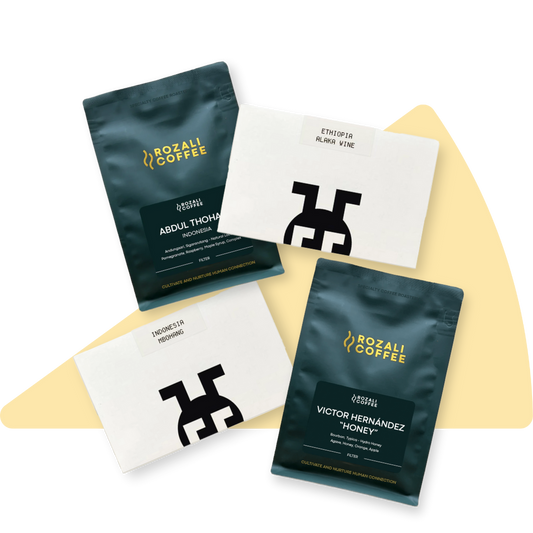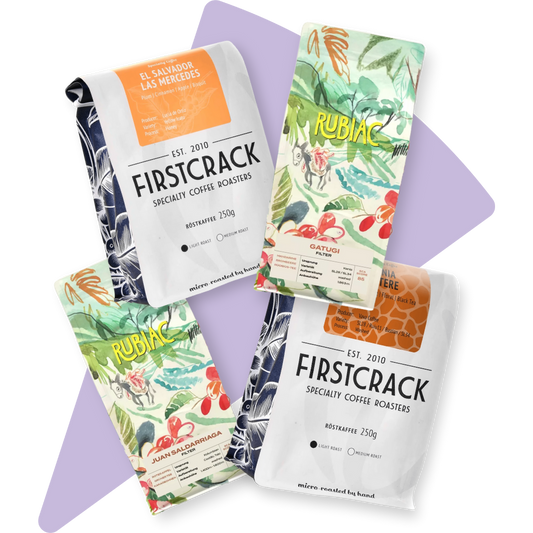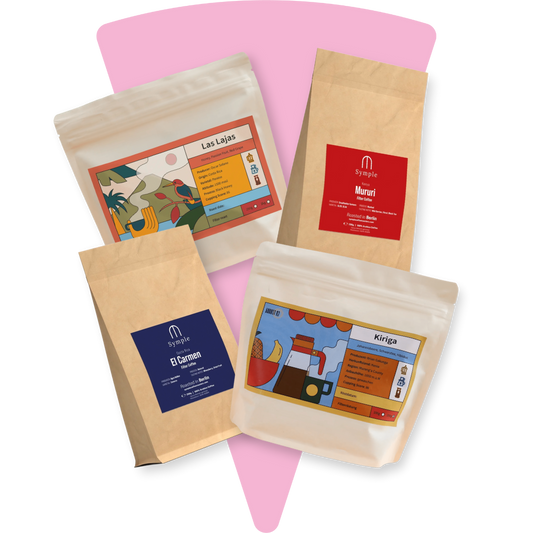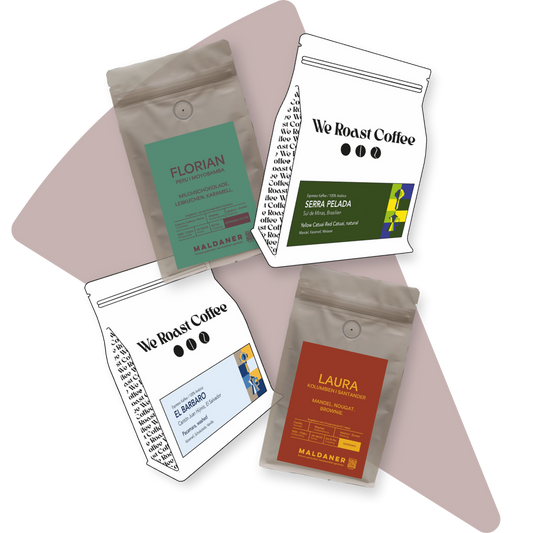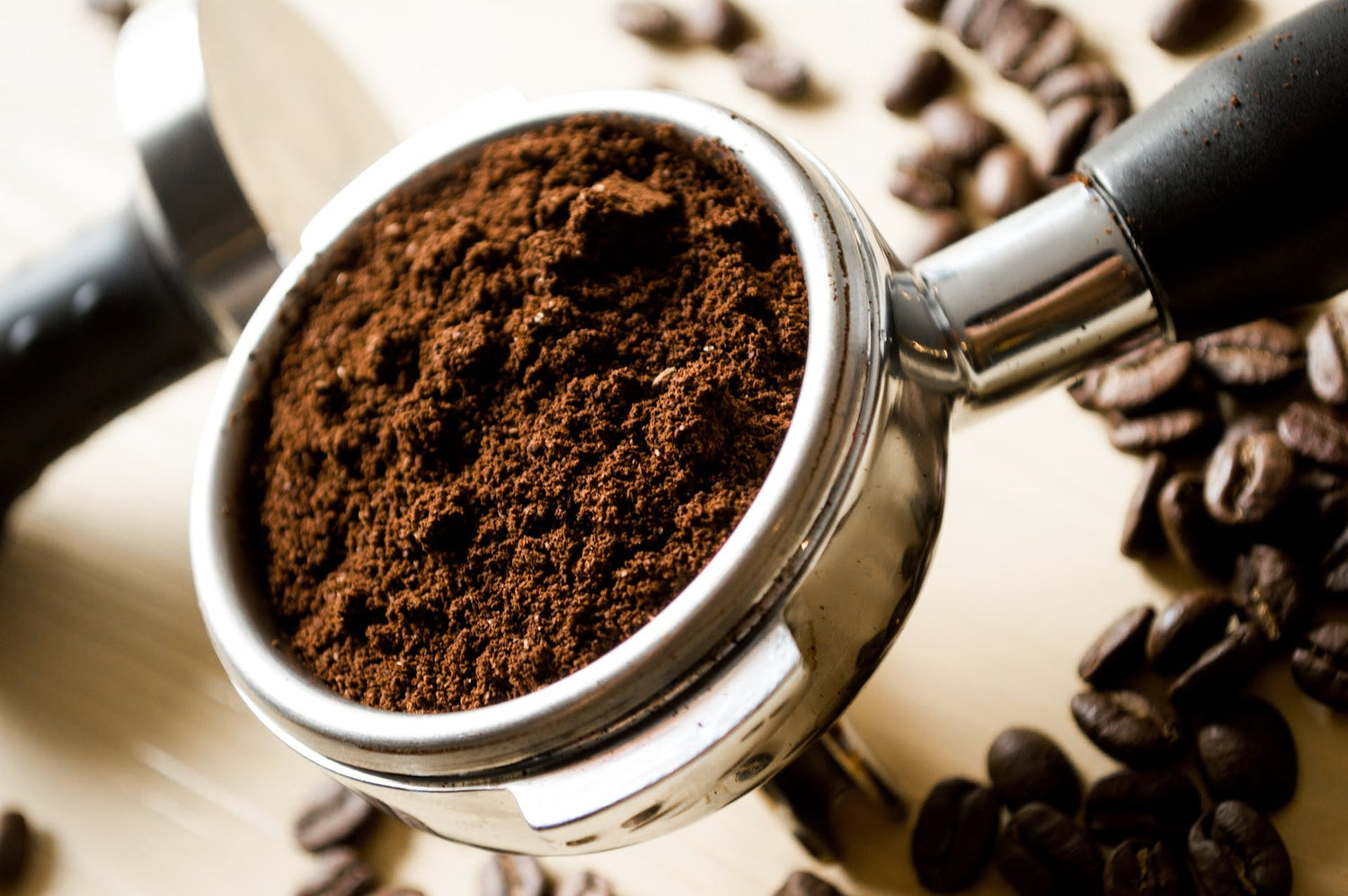
Coffee grind: The key to perfect coffee
We'll tell you everything you should know about coffee grinding to take your coffee to the next level.
The basics: The ideal coffee grind
Have you ever wondered why your coffee sometimes tastes great and sometimes it tastes mediocre? Well, it could be the grind of your coffee beans. This often overlooked factor plays a crucial role in brewing good coffee.
But before we dive into the details, let’s cover the basics. What exactly happens when grinding and what is the coffee grind? It's simple: During the grinding process, the surface area of the coffee bean is increased, allowing it to come into optimal contact with water. At the same time, the cell structure in the beans is broken down, allowing the release of a variety of aromatic substances, which then dissolve in the water.
The grinding degree describes how finely or coarsely the coffee beans are ground. It significantly influences the taste of your coffee. Finer particles release more flavors, while coarser particles promote a more mild taste. If the grinding level is set correctly, the various aromas and flavors in the coffee can fully develop and the taste is significantly improved. That's why it's so important to choose the right grind level for your preferred preparation method.
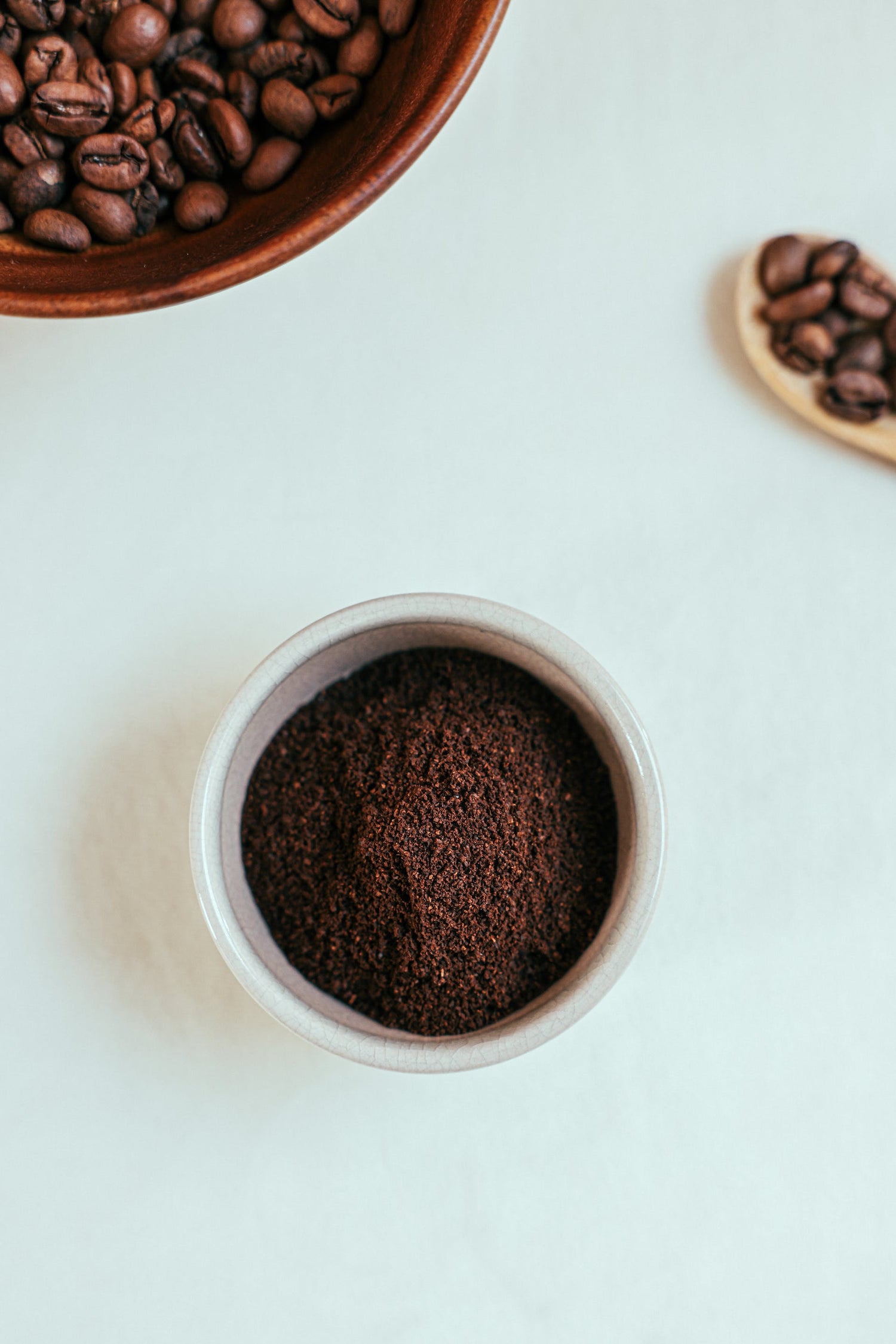
The correct grind prevents:
- Over- and under-extraction: The correct grind ensures even extraction. However, if the grind is too coarse or too fine, some coffee particles may be over- or under-extracted, resulting in an unbalanced taste. The Specialty Coffee Association recommends an extraction of 18 to 22 percent, also known as the Golden Cup Standard.
- Watery coffee : If the grind is too coarse, the water will flow through the coffee too quickly. The result is a watery, tasteless coffee.
- Bitter coffee : If the grind is too fine, your coffee will be over-extracted and too many bitter substances will end up in your cup. This leads to an unpleasant taste.
Grinding coffee: Choosing the right coffee grinder
Before we look at the different coffee grinding levels, let's look at the tools you can use to grind your coffee beans. There are essentially two types ofcoffee grinders : manual and electric.
Manual coffee grinders are ideal for those who have limited space and a limited budget. Although they require a little more muscle strength, they are handy and portable. Perfect for travel or the rustic coffee experience at home.
Electric coffee grinders are more convenient and faster. They are usually equipped with different coffee grinding settings, which makes preparing coffee very easy. Electric mills are particularly suitable for everyday use when things have to be done quickly.
In addition, there are different types of grinders in coffee grinders that influence the degree of grinding. The two most common types are cone burrs and disc burrs. Both types of grinders have their own advantages and disadvantages, but the differences in home use are of secondary importance. When choosing the grinder, you should pay more attention to the overall quality.
Manual and electric grinders are equally effective as long as they are able to achieve the desired grind level. Make sure your grinder is always clean and well maintained for optimal results.
Particle size and uneven grinding material
Regardless of whether you are grinding for espresso or filter coffee, uniform grinding is extremely important. If the size of the particles differs too much, one part of your grind will over-extract while the other part will under-extract. We therefore generally advise against mills with impact grinders. The grinding level cannot really be adjusted here and you get a very uneven result. Especially if you buy good coffee, you should choose a high-quality grinder that gets the most out of the delicious beans.
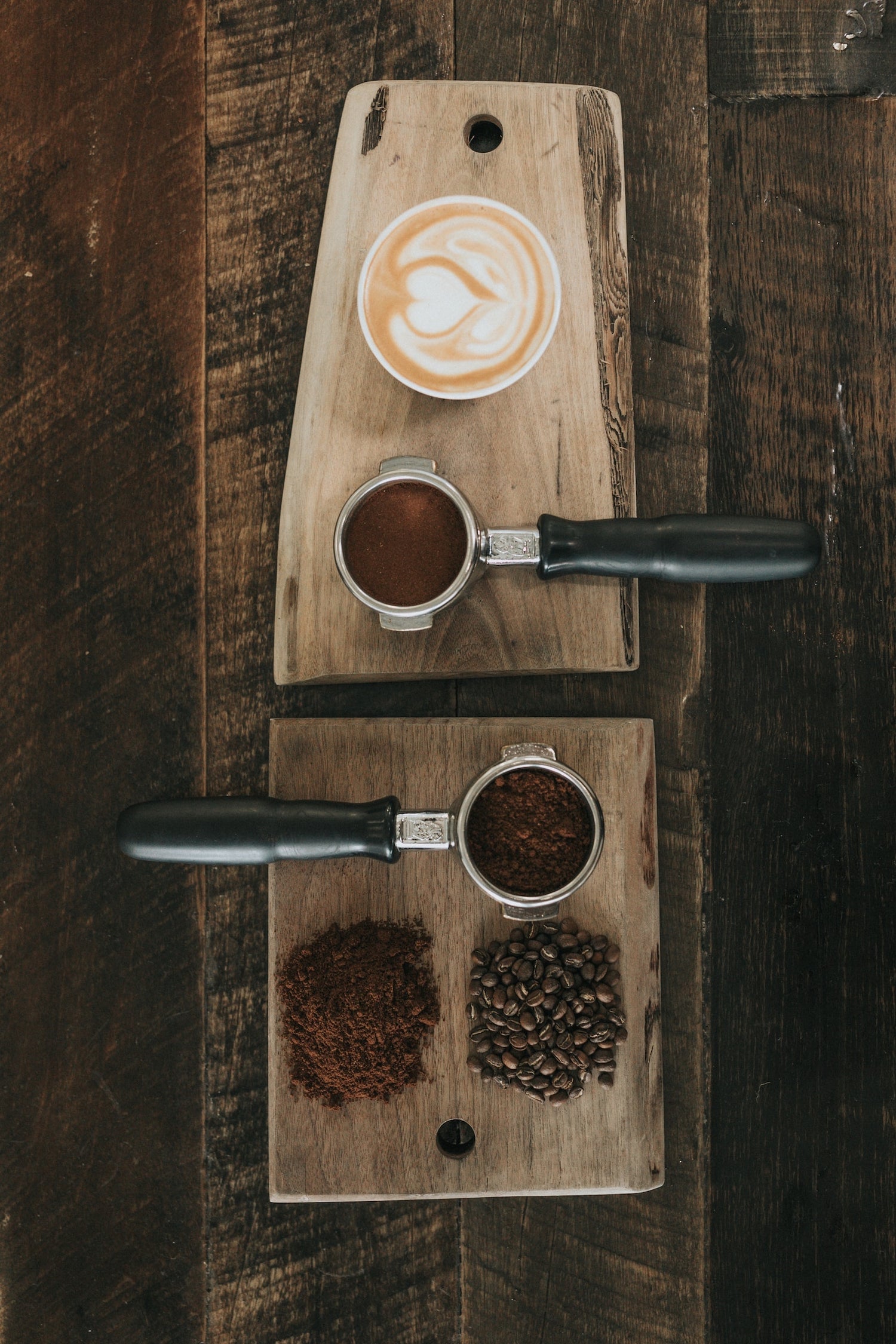
The different coffee grinds
Now that we know the tools, let's take a closer look at the different coffee grinds. Choosing the right grind depends on your preferred preparation method.
Coarse coffee grind: This grind is similar to coarse sea salt and is ideal for preparation methods such as the French press . In this form, the coffee becomes less bitter and has a mild aroma.
Medium coffee grind : Similar to coarsely ground coffee, but slightly finer. It is suitable for methods such as the pour-over method andfilter coffee .
Fine coffee grind : This grind is about as fine as sugar and ideal for espresso. The fine grind ensures a concentrated and strong taste.
Extremely fine grind : This grind is extremely fine and is reminiscent of powdered sugar. It is used for Turkish coffee, where the coffee particles float in the liquid.
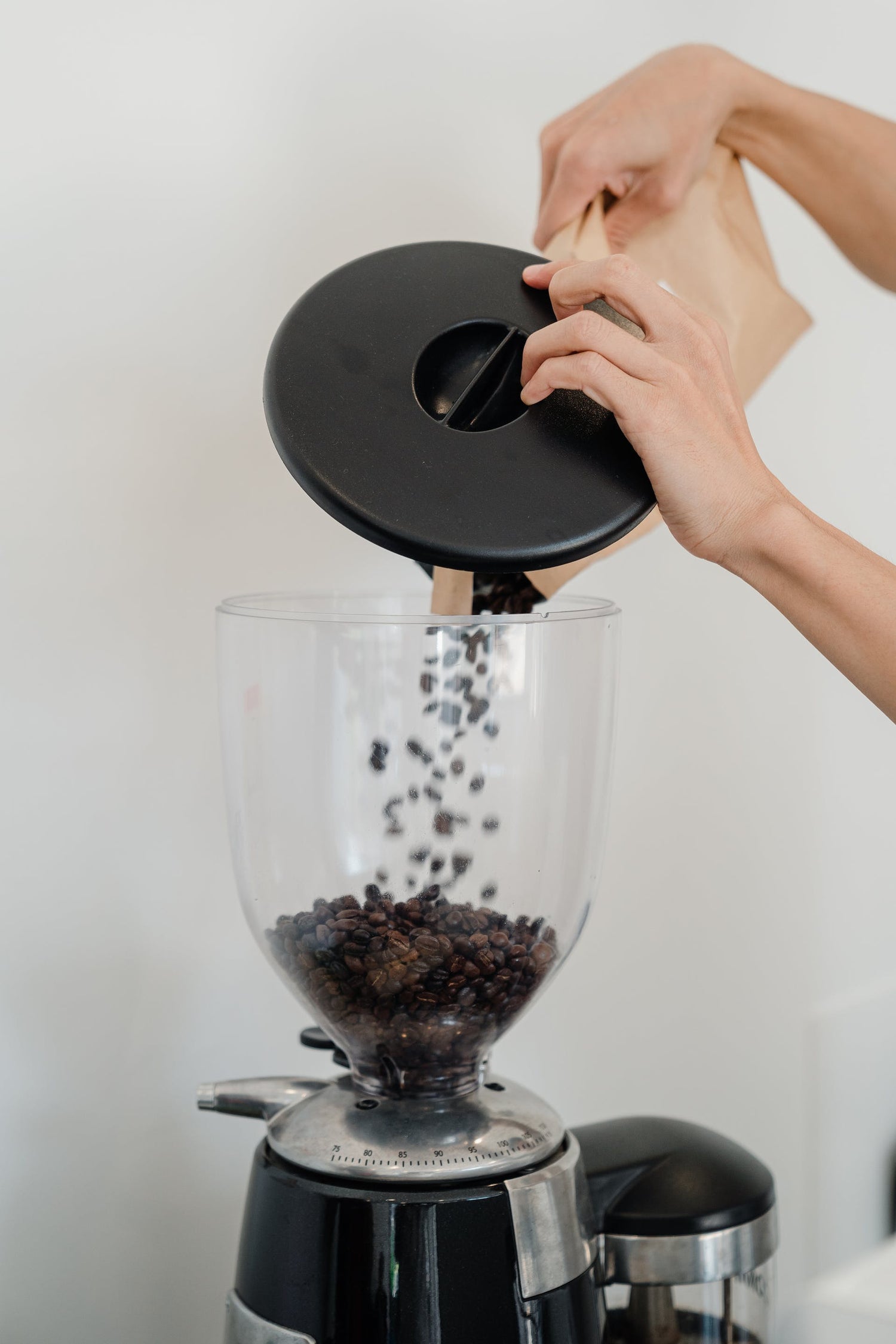
Which coffee grinding level suits which preparation method?
Now it's getting exciting! Which grinding level suits your preferred preparation method best? Here are our recommendations:
Filter coffee : For filter coffee, you should use a medium-coarse grind. The particles should be similar in size to coarse grains of sand.
French Press : As mentioned above, coarsely ground coffee is the right choice for the French press. It allows for slow extraction and a full aroma.
AeroPress : A medium grind is usually perfect for the AeroPress . Experiment a little and find the grind that best suits your taste.
Espresso : For a perfect espresso , you should use finely ground coffee. The fine texture allows for quick extraction and an intense taste.
Mocha pot : A very fine grind is optimal here.
Chemex : If you use a Chemex carafe, a medium-coarse grind works best.
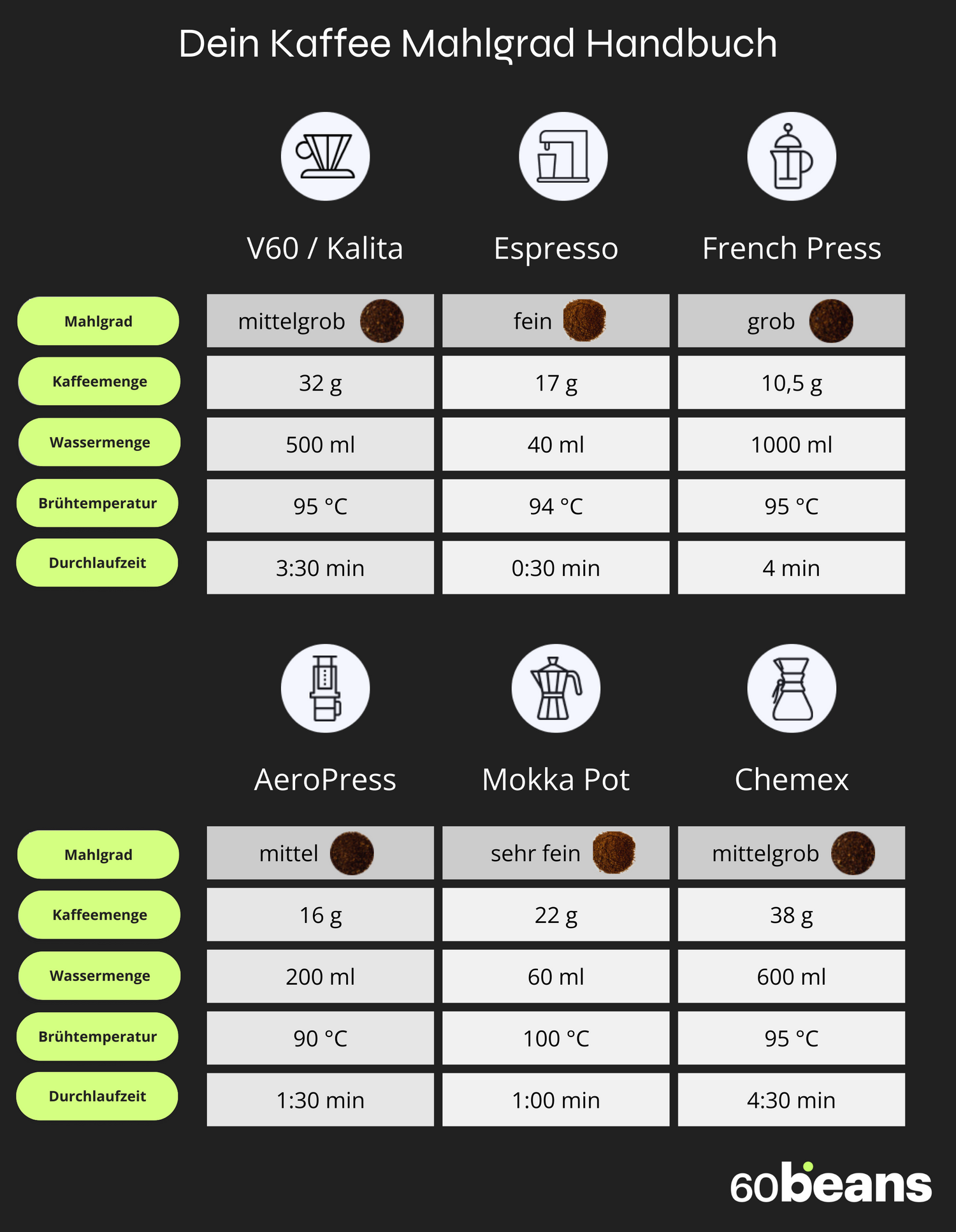
Your coffee grinding manual
So that you always know the right grinding level for your preferred method of preparation, we have created a coffee grinding level manual for you.
Feel free to print it out so that you always have it ready when needed.
You should consider this in addition to the coffee grinding level
Regardless of your preferred brewing method, it is important to always grind your coffee fresh. A good rule of thumb is to only grind as much coffee as you immediately need. Ideally, you should brew the coffee within a few minutes of grinding to enjoy the full flavor.
Here are some reasons why freshly ground coffee is so crucial:
1. Maximize Flavor : Freshly ground coffee has a more intense flavor profile. Within just 15 minutes of grinding, ground coffee loses 60 percent of its aroma when exposed to air.
2. Preservation of freshness : Coffee beans are largely protected from external influences as long as they are unground. By grinding immediately before brewing, you preserve the freshness of your beans, resulting in an outstanding coffee aroma.
3. Adjusting the grind level : You can adjust the coffee grind level to the specific requirements of your preparation method to achieve the best result. This is a luxury you lose when you buy pre-ground coffee.
4. Avoiding Oxidation : Coffee is susceptible to oxidation once it is ground. This causes the coffee to lose freshness and affect its taste. Fresh grinding shortly before preparation minimizes this effect.
This is how you store your coffee beans properly
To keep your coffee beans fresh, store them in an airtight container in a cool, dark place. This means they are optimally protected from light, air and moisture.
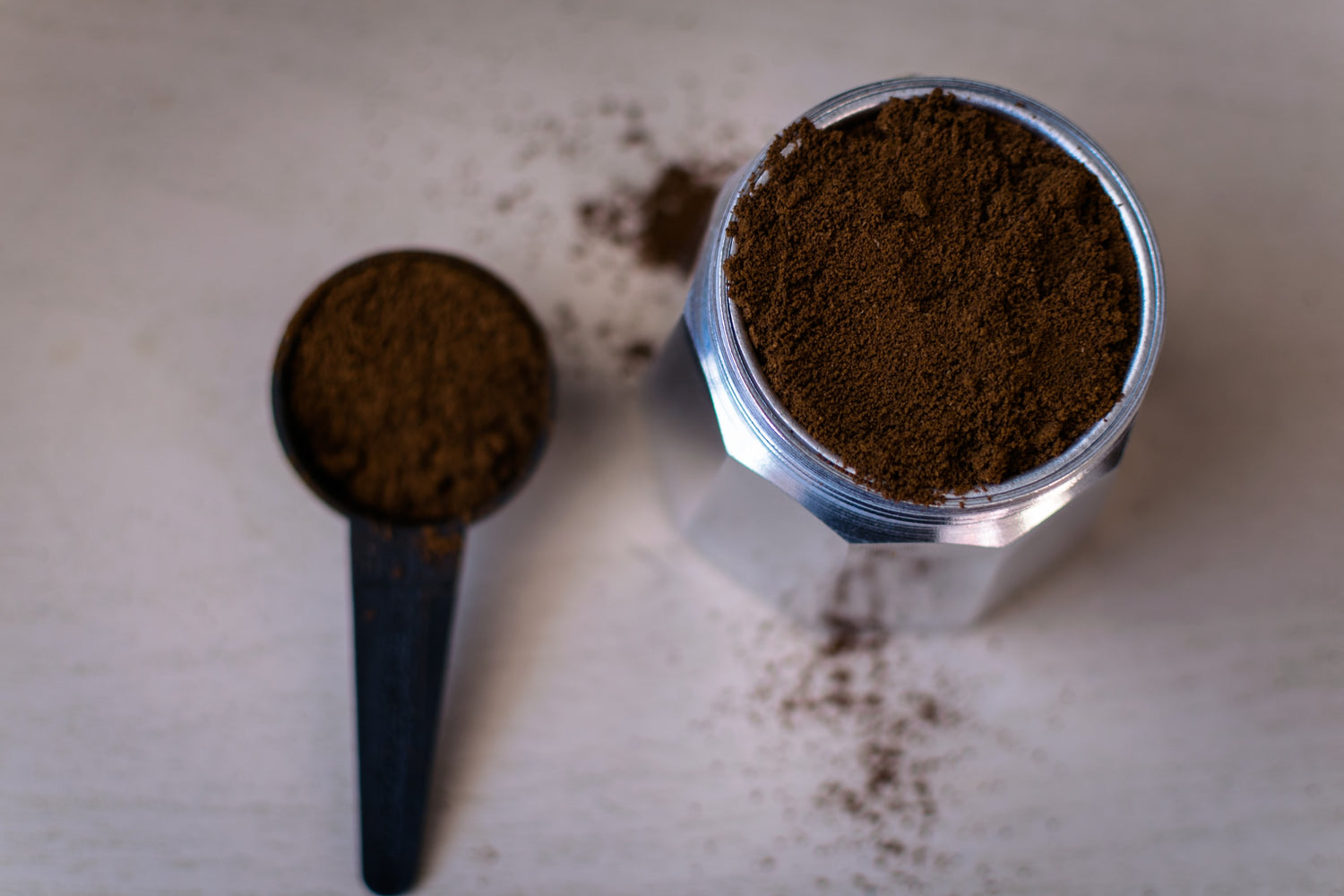
Mistakes and common misunderstandings when it comes to coffee grinding
There are some common mistakes and misconceptions surrounding coffee and the correct grind size. You should avoid these typical mistakes:
Grind too fine for filter coffee : If you make filter coffee and use coffee that is ground too fine, your coffee will likely be over-extracted and taste bitter. This happens because when the coffee is finely ground, the water flows too slowly through the coffee and extracts too many unwanted aromas.
Grinding too coarse for espresso : If the grinding is too coarse, the espresso will be thin and tasteless. Proper extraction of espresso requires that the water remains in contact with the ground coffee to effectively absorb all the flavors. If the grind is too coarse, the water will flow through too quickly and the espresso will be thin and tasteless. A fine grind allows the water to be in contact with the coffee for a longer period of time, allowing the flavors and oils to be extracted effectively.
Uniform particle size : Try to achieve a uniform particle size to ensure your coffee is extracted evenly. Inconsistent particle sizes can lead to uneven extractions, where some coffee particles are over- or under-extracted. This leads to a lack of balance in the taste of your coffee. To avoid this problem, it is recommended to calibrate your coffee grinder well and ensure that it produces a consistent particle size. This is particularly important if you value precision in preparation.
The more expensive the coffee grinder, the better the coffee : This is a common misconception. The price of your coffee grinder is not necessarily an indicator of the quality of your coffee. While high-quality grinders often grind more precisely and are more durable, the quality of your coffee also depends heavily on the choice of coffee type and the correct setting of the grinder. Even with an expensive grinder, poor coffee can be made if the coffee beans are of poor quality or the grinder is not set correctly.
Tips for optimizing coffee taste
Finally, we have some tips for you to take your coffee to the next level:
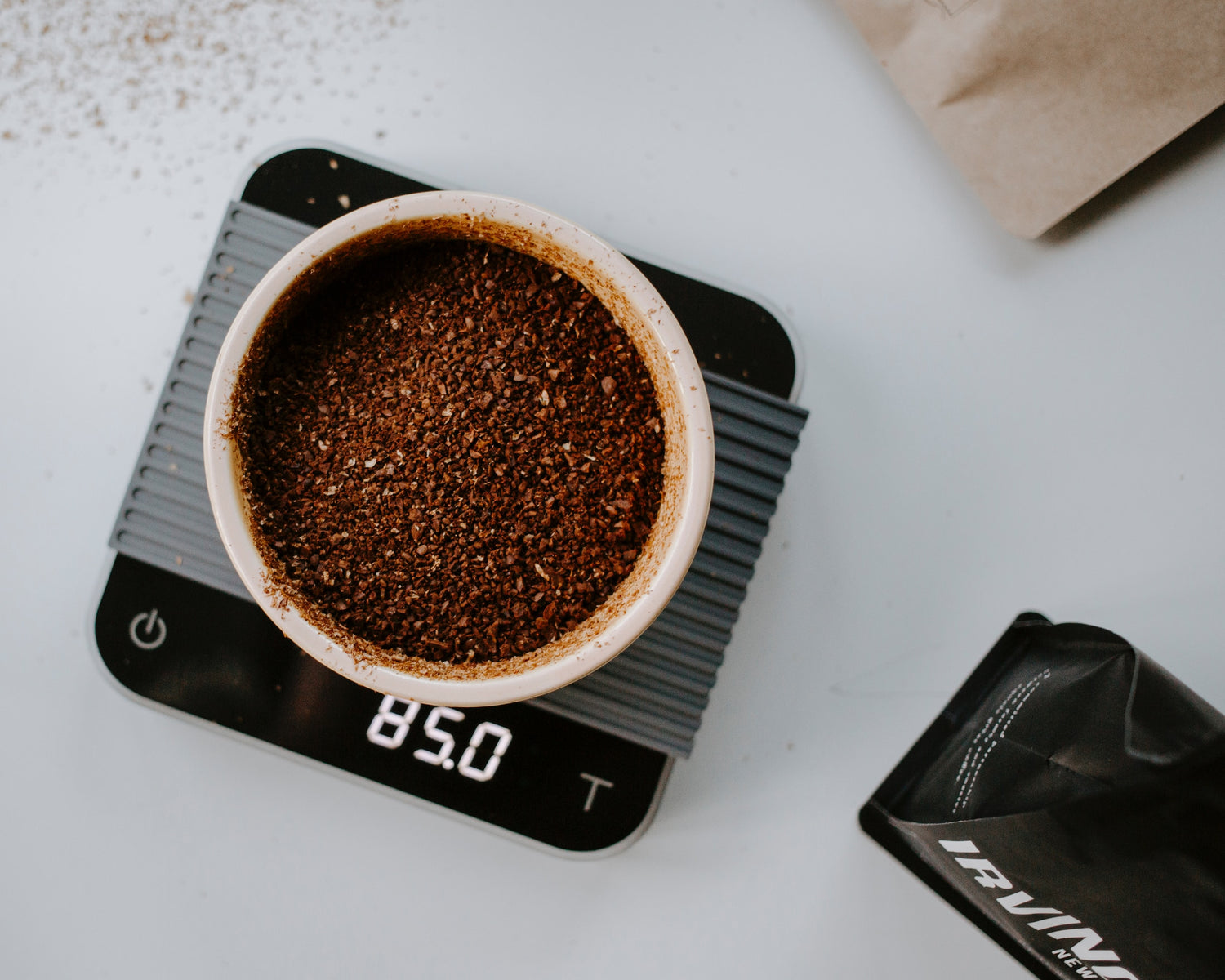
Experiment
Try out different coffee grinds and bean types to find your perfect coffee.
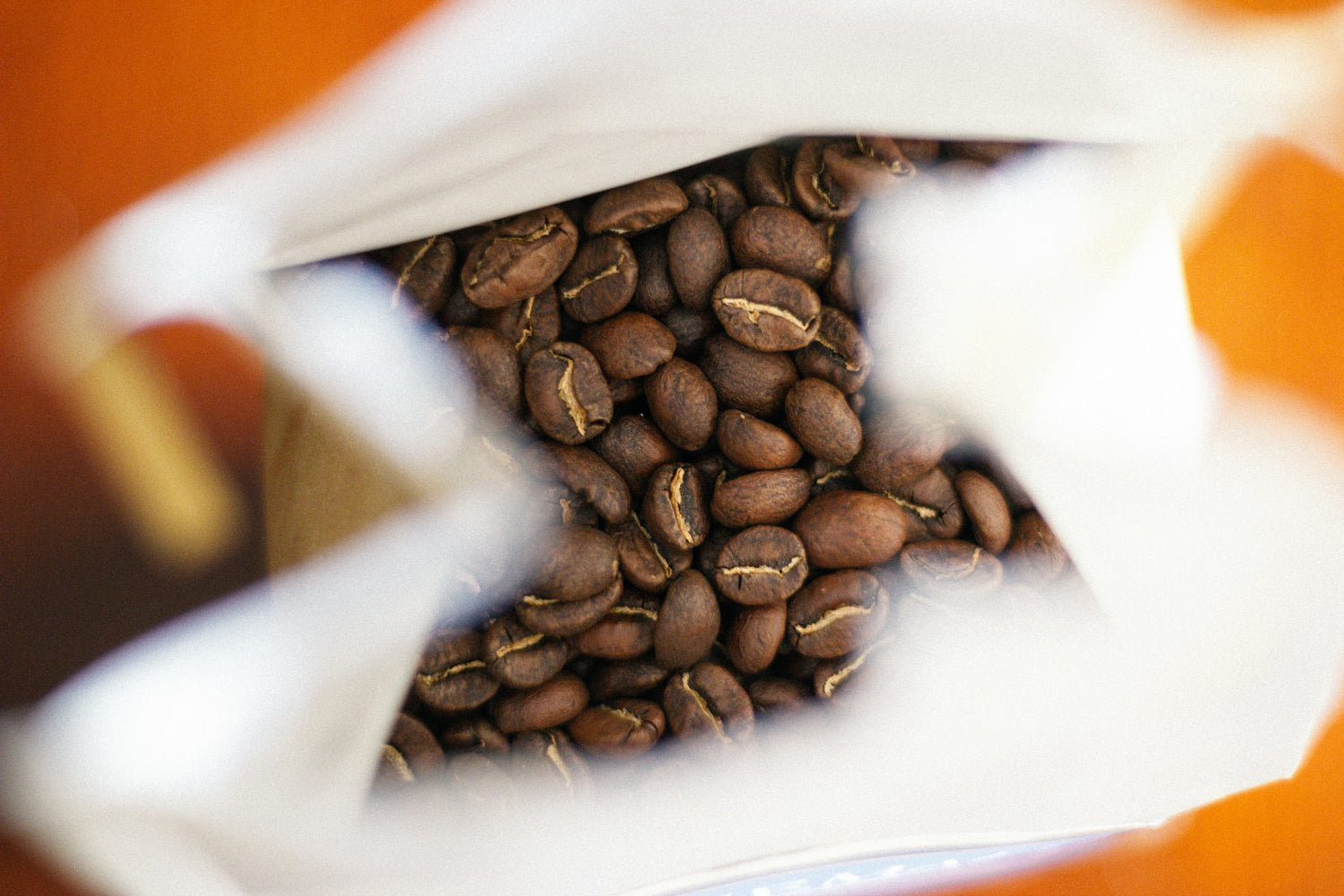
Coffee quality
Invest in high-quality coffee beans . Even the best grinder cannot conjure up a masterpiece from inferior beans. You will find a large selection in our shop.
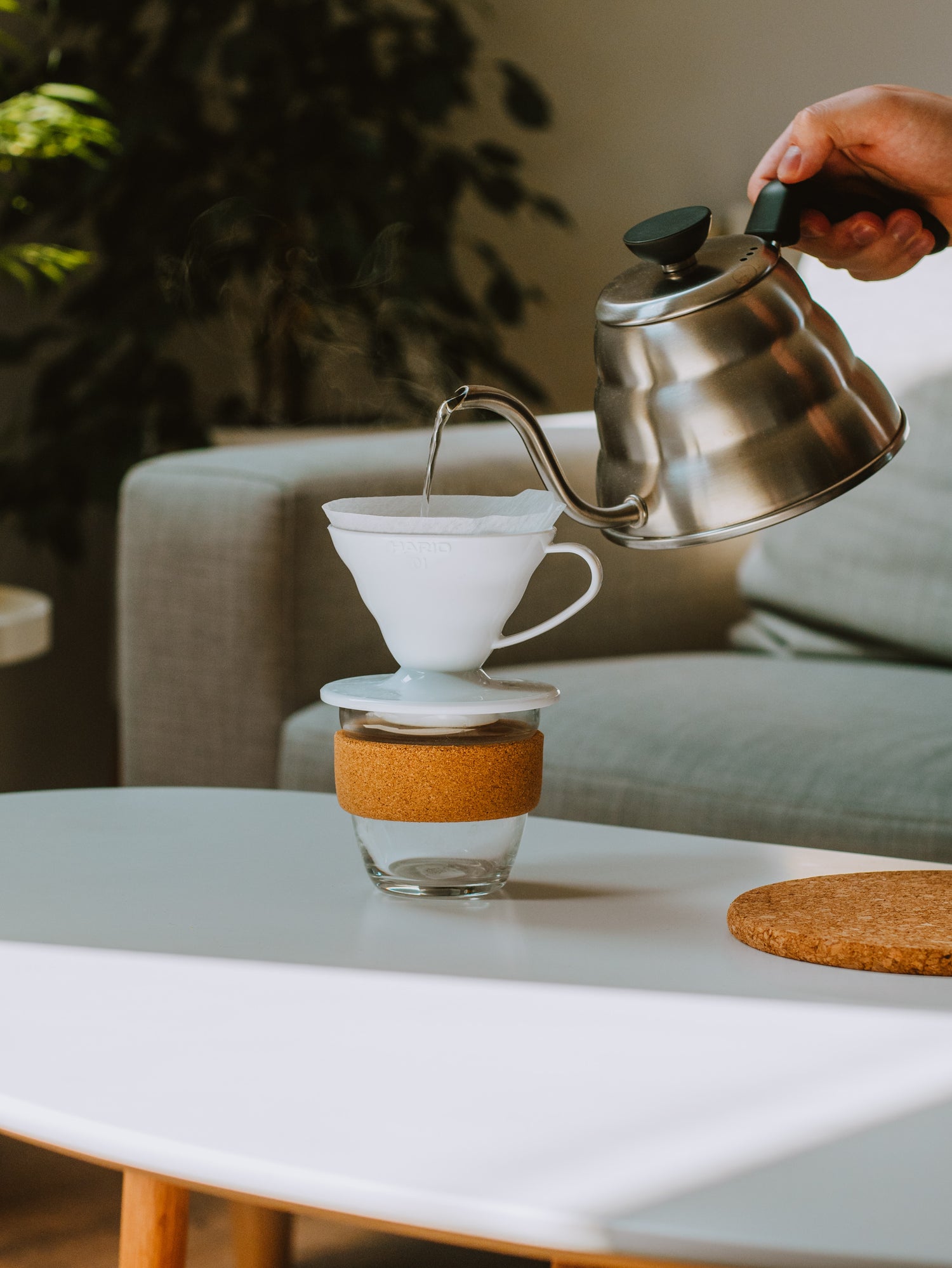
Water temperature and brewing time
Make sure you heat the water to the right temperature and adjust the brewing time to optimize the taste of your coffee.
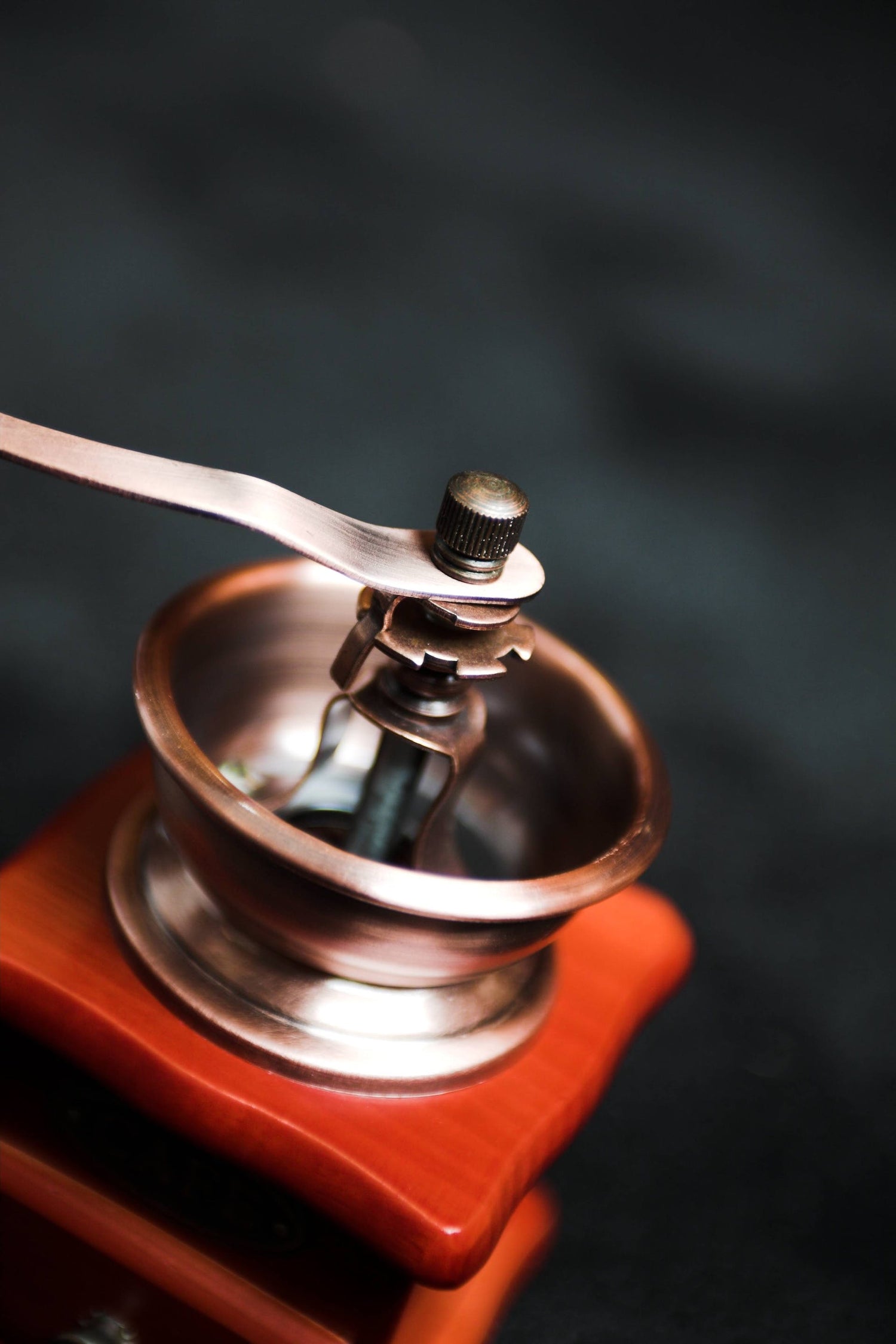
Cleaning the coffee grinder
Keep your coffee grinder clean to ensure that old coffee does not affect the quality of your fresh coffee.
The perfect coffee grind for incomparable enjoyment
No matter whether you are an espresso fan or a French press lover, the right coffee grind is a crucial factor in the taste of your coffee. It alone can take your coffee from good to great. So, experiment, try out different grinding levels and enjoy the journey to your perfect coffee. Remember, it's your coffee, so make it exactly how you love it - even if that's outside the norm.
Discover high-quality coffee beans
-
Experimental & Complex Tasting Set Filter
(0)Kolumbien, Äthiopien, Indonesien- €68,90 / 4 x 250g
-
- €68,90 / 4 x 250g
- Unit price
- / per
- Translation missing: en.products.product.price.price_per_kg
- €68,90 / per kg | €1,10 per / Cup
New -
Floral & Light Tasting Set Filter
(0)Kenia, Kolumbien, El Salvador- €56,90 / 4 x 250g
-
- €56,90 / 4 x 250g
- Unit price
- / per
- Translation missing: en.products.product.price.price_per_kg
- €56,90 / per kg | €0,91 per / Cup
New -
Fruity & Lively Tasting Set Filter
(0)Costa Rica, Ethiopia, Kenya- €56,90 / 4 x 250g
-
- €56,90 / 4 x 250g
- Unit price
- / per
- Translation missing: en.products.product.price.price_per_kg
- €56,90 / per kg | €0,91 per / Cup
-
Nutty & Chocolaty Espresso Tasting Set
(0)Brazil, Colombia, El Salvador, Peru- €42,90 / 4 x 250g
-
- €42,90 / 4 x 250g
- Unit price
- / per
- Translation missing: en.products.product.price.price_per_kg
- €42,90 / per kg | €0,69 per / Cup
FAQ Coffee grind level
frequently asked Questions
What is the coffee grind level?
Coffee grind size refers to the size of the coffee particles created by grinding coffee beans. It varies from fine to coarse and has a significant influence on the taste and preparation of coffee.
What types of coffee grinders are there?
There are two main types of coffee grinders: manual and electric. Manual grinders require hand labor and are often less expensive, while electric grinders are more efficient and convenient.
Why is the coffee grind important?
The coffee grind size affects the extraction when brewing the coffee. A fine grind is suitable for espresso, while a coarser grind is better for filter coffee. The right grind ensures the best taste.
How do I choose the right grind level for my coffee preparation?
The choice of grind depends on the preparation method. For espresso you should choose a fine grind, for French press a coarse grind and for Aeropress or filter coffee a medium grind.
What effect does the grinding level have on the taste?
Fine grinds produce stronger, more bitter coffee, while coarse grinds produce a lighter, more acidic taste. The right grind can make the coffee more pleasant and balanced.
How do I adjust the grinding level?
The grinding level setting depends on your coffee grinder. Most grinders have a dial to adjust the size of the coffee particles. Experiment to find the grind you want.
More coffee knowledge
View all-
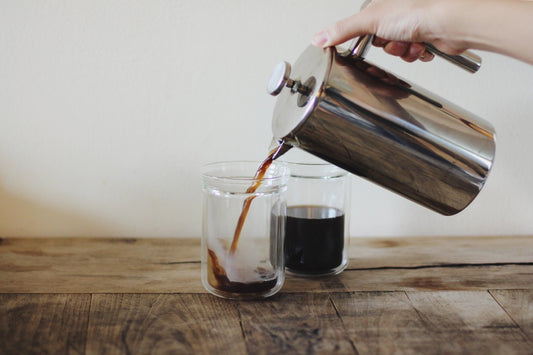
Cleaning a Coffee Pot: A Guide to Proper Care
Whether it's coarse dirt or light dirt - with our guide you'll be able to clean your coffee pot in no time. Also find out how you can avoid pollution...
Cleaning a Coffee Pot: A Guide to Proper Care
Whether it's coarse dirt or light dirt - with our guide you'll be able to clean your coffee pot in no time. Also find out how you can avoid pollution...
-
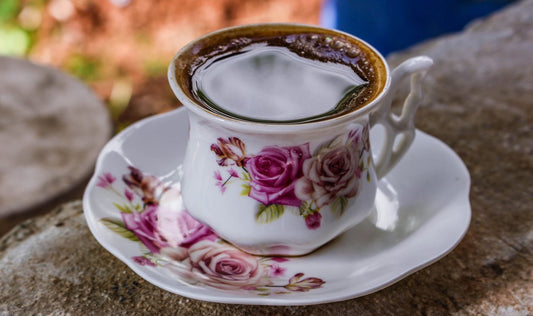
Flower coffee: what does the term mean?
Floral coffee? What should it be? If you have just asked yourself this question, you should read this article. Because perhaps you have already prepared it yourself unknowingly.
Flower coffee: what does the term mean?
Floral coffee? What should it be? If you have just asked yourself this question, you should read this article. Because perhaps you have already prepared it yourself unknowingly.
-
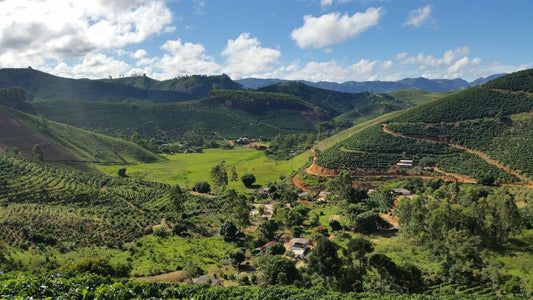
Growing Coffee: From Plant to Cup
Immerse yourself in the fascinating world of growing coffee! In this article, you'll learn how coffee grows, what techniques are needed to harvest perfect coffee beans, and what developments are...
Growing Coffee: From Plant to Cup
Immerse yourself in the fascinating world of growing coffee! In this article, you'll learn how coffee grows, what techniques are needed to harvest perfect coffee beans, and what developments are...

